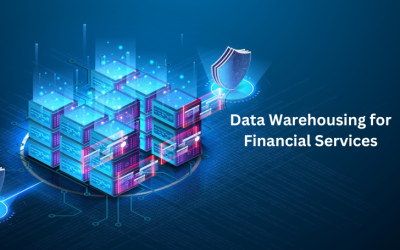Cybersecurity is a crucial issue in a time when digital transformation is progressing rapidly and at a remarkable speed. As associations embrace trend-setting innovations and relocate towards a data-driven direction, the requirement for vigorous online protection measures becomes central.
The digital landscape is undergoing a profound transformation, and as technology advances, so do the tactics of cyber threats. In this era of rapid technological evolution, it is crucial to look ahead and anticipate the future of cybersecurity. This article digs into the procedures, advances, and patterns that will characterize the scene of cyber security, offering a brief look into how we can shield ourselves from rising digital dangers in the years to come.
It is impossible to overstate the significance of cybersecurity in today’s digital and interconnected world. Cybersecurity is essential in protecting individuals, organizations, and countries from various digital threats. Here are some key reasons why cyber security means:
- Protection Of Sensitive Information
- Preservation of privacy
- National Security
- Business Continuity
- Protection Against Financial Loss
- Prevention of Intellectual Property Theft
- Mitigation Of Cyber Attacks
- Trust and Reputation of Management
- Global Connectivity
Cybersecurity Horizons: Unveiling Tomorrow’s Strategies and Trends
The future of cybersecurity lies at the intersection of innovation and defense in the ever-evolving technology field. As we peer into the digital skyline, knowing the impending difficulties and progressions becomes basic for getting our interconnected world. Let’s leave on an excursion to uncover the forming powers that will direct the course of cyber security in the times ahead.
Zero Trust Architecture
The traditional edge-based security model is presently not adequate. The Zero Trust framework, a security structure that expects no substance, whether inside or outside the organization, can be relied upon, is acquiring unmistakable quality. This approach orders a severe personality check for anybody attempting to get to assets, lessening the risk of unapproved access and horizontal development inside an organization.
Machine Learning and AI-Fueled Safeguard
As digital dangers become more refined, so too should our safeguarding components. The integration of AI and ML into online protection techniques is progressing. These developments can progressively examine large amounts of data, recognizing examples and peculiarities that human experts would otherwise overlook. AI-powered threat identification and response vows to essentially upgrade our capability to deal with rapidly evolving digital threats.
Quantum-Safe Cryptography
The coming of quantum registering represents a possible danger to conventional cryptographic techniques. To get ready for quantum time, the turn of events and reception of quantum-safe cryptography are fundamental. Encryption algorithms that are secure even in the face of quantum computing capabilities are needed to ensure the long-term protection of sensitive data.
Biometric Verification and Conduct Investigation
Only passwords are presently not adequate to get our computerized characters. An additional layer of security is provided by biometric authentication, which includes fingerprint scanning, facial recognition, and behavioral biometrics. By ceaselessly dissecting client conduct, frameworks can identify oddities and brief extra checks when dubious exercises are distinguished.
XDR, or Extended Detection and Response
Conventional Endpoint Detection and Response (EDR) arrangements are developing into Broadened Recognition and Reaction (XDR) stages. As a result of XDR’s integration of data from multiple security products, the IT environment as a whole gets a more complete picture of potential threats. This comprehensive methodology empowers quicker and more powerful danger discovery and reaction.
Cloud-Native Security
With the rising reception of cloud administrations, it is foremost to get cloud conditions. Cloud-local security arrangements are planned explicitly for cloud framework, offering powerful assurance against dangers that target cloud-based resources. This incorporates devices for checking, access control, and information encryption inside cloud conditions.
Security Measures for IoT
Getting IoT gadgets will become a primary focus as the Internet of Things (IoT) expands. Future network protection measures might incorporate better IoT gadget verification, encryption, and observation to keep these gadgets from becoming section focuses for digital dangers.
5G Security Difficulties
The rollout of 5G organizations presents new security challenges. Future online protection endeavors should address the weaknesses and dangers related to the sped-up 5G, especially in areas like basic foundation and medical services.
Network protection Mindfulness and Preparing
Cyber incidents continue to be significantly influenced by human error. Future cybersecurity methodologies should focus on continuous mindfulness projects and preparing to teach people about advancing dangers, social designing strategies, and the significance of sticking to security best practices. Well-informed users are an essential line of defense against cyber threats.
The Developing Cybersecurity Scene
Cyber security threats have closely evolved with mechanical advances, presenting difficulties that require creative adjustments. From ransomware attacks to sophisticated phishing schemes, organizations face a wide variety of threats that can make information second-guess and disrupt operations. Traditional online security measures, while partially capable, may struggle to stay abreast of the rapidly changing nature of digital threats.
Enter Advanced Data Warehousing
Advanced warehouse arises as a vital participant in strengthening cybersecurity guards. Different from traditional data storage systems, advanced data warehouse involves big data analytics, AI, and machine learning to not only store and monitor large measures of information but also to isolate and mitigate potential security threats proactively.
Integrating Cybersecurity: Key Systems in Cutting-Edge Data Warehousing
Real-Time Monitoring and Threat Detection
Carrying out continuous observation inside data warehousing permits associations to distinguish abnormalities and potential security dangers as they occur. Progressed investigation and AI calculations can break down data extracts and conduct, empowering the recognizable proof of strange exercises characteristic of an online protection break.
Risk Analysis Using Predictive Analysis
Utilizing data analytics apparatuses inside data warehousing empowers associations to evaluate potential network protection risks. By examining verifiable information and distinguishing designs, prescient models can figure out expected weaknesses, permitting proactive measures to be taken before a danger emerges.
Data Encryption and Tokenization
Advanced warehousing consolidates hearty encryption and tokenization strategies to get delicate data. Scrambling information both on the way and very still guarantees that regardless of whether unapproved access happens, the captured information stays incoherent and unusable.
Identity and Access Management (IAM)
IAM assumes an essential part in network protection. IAM features that control and monitor user access are integrated into advanced Data Warehousing Services, ensuring that only authorized individuals are permitted to view or modify specific datasets. Multi-factor authentication enhances access security even more.
Mechanized Occurrence Reaction
Using automation in incident response processes in data warehousing can simultaneously reduce the time it takes to identify and mitigate cyber security episodes. Automated responses have the ability to isolate affected systems, generate alerts, and start predefined countermeasures without the need for human intervention.
Customary Reviews and Consistency Observing
Executing customary reviews and consistently observing systems inside data warehousing guarantees that security conventions line up with industry principles and guidelines. This proactive methodology assists associations with distinguishing potential consistency holes and addressing them before they become security weaknesses.
Emerging Cyber Threats Snapshot
- Evolution of Ransomware: More modern and designated assaults, including twofold blackmail.
- Supply Chain Attacks: Focusing on software supply chains for broad split the difference.
- Zero-Day Exploits: Taking advantage of obscure weaknesses without accessible patches.
- AI and ML Assaults: undermining or controlling artificial intelligence and AI protections.
- Deepfake Assaults: Using artificial intelligence to fabricate convincing content for disinformation.
- Exploitation of IoT Devices: Exploitation flaws in Internet of Things hardware.
- 5G Security Difficulties: New dangers and assault vectors with the rollout of 5G organizations.
- Social Manipulation and Phishing: Advancing strategies, including lance phishing and business email, split the difference.
- Crypto Currency-related Dangers: Attacks that take advantage of cryptocurrencies like crypto jacking.
- Quantum Computing Risks: Threats to the current cryptographic techniques.
- Abuse of AI in Cyberattacks: Mechanization of assaults and improvement utilizing AI.
- Cross-Site Prearranging (XSS) and Code Infusion: Web Application weaknesses.
- Problems with Remote Worker Security: Dealing with weaknesses in remote work arrangements through double-dealing.
- Biometric Data Burglary: Biometric data being misused and burglary occurring.
- Natural Dangers: Effect of environment-related Events on Basic Foundations.
Conclusion
As associations explore the complicated scene of cybersecurity dangers, high-level Data Warehousing Services emerge as an imposing partner in getting tomorrow. By coordinating constant observation, prescient investigation, encryption, IAM, robotized occurrence reaction, and consistency checking, associations can brace their safeguards against advancing digital dangers. The collaboration between online protection and high-level information warehousing shields delicate data as well as engages associations to embrace advanced development with trust in an always-changing mechanical scene.
The trend in cybersecurity is dynamic, set apart by constant development and transformation to arising dangers. Zero Trust Design, ML-controlled protection, quantum-safe cryptography, biometric confirmation, XDR, cloud-local security, and uplifted network safety mindfulness altogether structure the underpinnings of the upcoming network protection scene. By adopting these systems, innovations, and patterns, we can strengthen our security and explore the evolving computerized domain with certainty, ensuring a secure and resilient future against digital threats.







